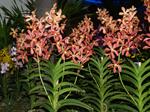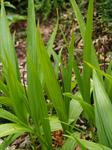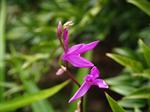Orchids
 Orchids are a very large and diverse range of plants. As a result, naming of genus is not always as straight forward as it could be. There are literally hundreds of new cultivars and two or three new genus (intergeneric) registered every month. Classification is an evolving science and changes are occurring on a continual basis. Here are some examples that may assist you in finding information out about those orchids which are hard to locate.
Orchids are a very large and diverse range of plants. As a result, naming of genus is not always as straight forward as it could be. There are literally hundreds of new cultivars and two or three new genus (intergeneric) registered every month. Classification is an evolving science and changes are occurring on a continual basis. Here are some examples that may assist you in finding information out about those orchids which are hard to locate.
Some plants, which are actually hybrids, have been given an intergeneric name that is used as the genus. Others have been given one name which is later changed, or reclassified, to another name. For instance, plants in the genus Rhyncholaelia were once considered to be of the genus Brassavola. Some sources now class them separately, as we have here in this book, while some have chosen to keep them as Brassavola. Most newer text will use the two separate names, or indicate that they are sometimes considered synonymous. However, especially in older text, this is not always the case.
Cross pollination of orchids to create a new, unique plant is a regular occurrence. In some instances, the resulting hybrid is referred to as a new genus. These names are actually intergeneric names. For example, Zygowarrea is the genus name for a cross of Warrea lindley x Zygopetalum hooker (Zygo + Warrea). All other plants then hybridised from Zygowarrea will likely be given the intergeneric genus name of Zygowarrea. Intergeneric names can also be named in honour of a particular person, and usually occurs when several plants have been crossed to breed the plant. For instance, the intergeneric name Alangreatwoodara is in honour of plant breeder Alan Greatwood, with the original plant in the "genus" being a cross of three orchids.
To add to the confusion, all genus and intergeneric names are given an abbreviation. So, you may indication that an abbreviation is being used. However, if that full stop does not appear, as is often the case, there is no indication that Ascda is the accepted abbreviation for the genus Ascocenda.
 Bletilla Orchids
Bletilla Orchids (Abbreviation - Ble.)
There are nine or ten species of Bletilla. (see photos on right) This is a genus that is related to Cymbidium, and some species have at times been classified as a Cymbidium.
These are terrestrial (ground orchids) which grow from rhizomes, and occur naturally in temperate climates of eastern Asia. This makes them easier to grow in many other temperate climates. They are normally found growing on a sloping dry, well drained ground, amongst grasses, at altitudes of 100 to 3300 metres (330 to 10,890 feet).
It produces corm like pseudobulbs, and upright stems grow laterally from the base of back bulbs.
The leaves are plicate (i.e. folded into plaits) and thin, and flower racemes emerge from the tips of foliage. Petals and sepals are both similar in appearance, the lip is separate with 3 lobes. This genus is very similar to the North American genus Bletia (see entry) and related to Calanthe.
Culture
This deciduous plant is adaptable to most soils, but likes a light, fertile loam. Will tolerate full sun, but needs protection from the heat of the day. Can be grown easily outside or as a pot plant. Propagate this orchid by division.

This plant is widely distributed in China and into South East Asia and Japan. In fact, the rhizomes of some species are used widely in Chinese herbal medicine.
Cultivars
B. sinensis is similar to the more commonly grown B. striata, but has smaller dark red to rose flowers with darker makings on the sepals, petals and lip. It usually flowers in early summer.
B. striata (syn B. hyacintha) is capable of growing to 30 cm (12 inches) tall with flowers often pale purple, although the tone may vary. Flowers may reach 3-5 cm (1.2 to 2 inches) across. They are relatively cold hardy species (grows in temperate regions if sheltered from extreme cold). A white flowering variety is also grown in some countries. Most cultivars are bred from this species.
If you would like to learn more about orchid growing and care, then why not look at our great range of courses and eBooks.
Cut Flower Orchids - 100 hour course
Orchid Culture - 100 hour course
Orchids - Proficiency Award - 500 hour course
Growing Orchids eBook
Questions
If you have any questions about our courses and eBooks, our horticultural tutors are more than happy to help. Please click here to contact a
horticultural expert.
Other Horticultural EBooks
Our horticultural science staff have over the years written a large range of book and ebooks, many of which are are available through our school's online book store.
To visit the book store and browse some of these titles, click on any of the books below:
[08/01/2026 23:16:34]
More from ACS
Over 150 short courses, certificates and diplomas covering landscaping, crops, plants of all types and general gardening.